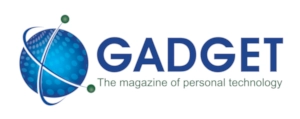Goldstuck on Gadgets
Online gets dressed up
The arrival of a Mr Price shopping cart on both Web and mobile sites, and new initiatives by Edcon and eBucks, mark a shift in how clothes are sold online, writes ARTHUR GOLDSTUCK.
For much of the past decade, online clothing retail in South Africa has seemed like the toddler party that the big kids avoided. Start-ups, newcomers and unknowns dominated, while the established brands either stayed away or made only a grudging appearance.
Edgars had a web site with a shopping cart, but it was more of an apology than a serious online store. The likes of Stuttafords, Truworths, Jet, Foschini and Mr Price were entirely absent from e-commerce.
Now, in one week, three major brands have come to the party, and getting dressed will never be the same again.
The biggest splash was made by the chain that is increasingly positioning itself as cool and go-ahead: Mr Price. Even their new web site address reflects that image: MrP.co.za. It claims 18 000 items in its catalogue, and allows customers to choose by size, colour, brand and … trend. Delivery choice is wide, from home to Post Office to nearest store.
Payment option is even wider, including credit card, COD, gift vouchers and account. More important, returns are allowed within 30 days, via store, Post Office or courier.
Probably the single most important option in all of the MrP bouquet, however, is it’s mobile site. It uses a web development standard called HTML 5, which allows the site to look the same on any phone browser, regardless of model. But the real killer app, so to speak, is not the mere fact that it can be used on a phone: it is that it looks great on a phone. It appears inviting, and that is the first step in convincing potential customers to become paying customers.
By coincidence, the organisation that had always been expected to take the lead, Edcon, made a mobile splash within hours of the MrP arrival. However, their new Smartshop mobile app does not compete directly. It is designed to be used in the store, to help customers make ‚”informed purchasing decisions‚”.
The app means customers no longer need to find an assistant for product information: pricing, sizes and availability of all items are offered through the app.
In its initial version, however, the developers of the app made the classic South African mistake of first building it for the iPhone. While that may work in the USA, with the iPhone being one of the dominant smartphones in that market, here only the elite economic and technological are iPhone users. It has 1% penetration among South African adult cellphone users living in cities and towns, compared to 50% for Nokia, and 18% for BlackBerry.
However, because the iPhone has the cool factor among techies and is more developer-friendly, homework tends to go out the window. Fortunately, Edcon saw the light, and has also had the app developed for BlackBerry, Android and Windows phones. Nokia’s Symbian operating system the most widely used on smartphones after the BlackBerry and possibly dominant in Econ’s target market remains outside the loop.
These initiatives are, indirectly, a response to the emergence of new ways of selling apparel online.
Zando shook up the online retail sector when it was launched in South Africa in January by German clone-merchants Rocket Internet. Their model is the American success story Zappos, which changed the way shoes are sold on the Internet.
Zando offers free delivery, extending the lesson learned previously by Cape Union Mart: the lower overheads of an online store even if you also operate physical stores – means you can absorb delivery costs in your margin, if you run an efficient operation.
Zando takes it further: the drivers making the deliveries wait for customers to try on items. If something doesn’t fit, the return is instant.
This week FNB rewards programme eBucks announced a partnership with Zando, allowing loyalty points to be spent on the clothing site. That adds to a range of payment options that includes PayPal.
So far, eBucks members have spent R1.9-billion worth of loyalty Rands across its various partners. A total of R2.3 billion in eBucks has been allocated, meaning just under half a billion rand that can be spent remains unspent. If that isn’t an incentive for retailers to sharpen their online pencils, nothing is.
* Arthur Goldstuck is Editor-in-chief of Gadget and managing director of World Wide Worx. Follow him on Twitter on @art2gee








